What Is The Most Expensive Coffee in the World?
How much do you love coffee?
Would you be willing to prove that love by spending – on just one pound of coffee – the equivalent of an international round-trip flight…to a far-away destination?
In this article, I’ll review some of the most expensive coffee in the world and then let you decide if the bag of coffee beans is worth the equivalent of that round-trip ticket…or not.
1. Black Ivory Coffee
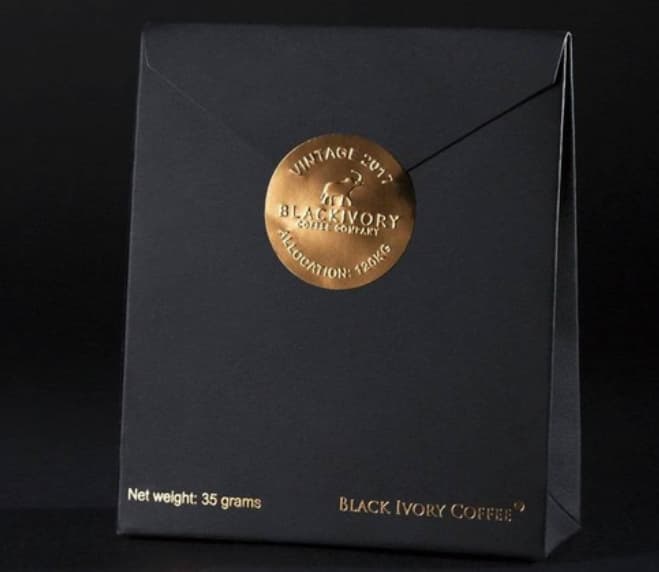
What is the price per pound?
Around $500 a pound, or $50 a cup. This is the most expensive coffee you can buy.
Where is it grown?
The Black Ivory Coffee Company sources their Arabica coffee from northern Thailand.
Why is it so expensive?
These coffee beans have a particular claim to fame. Are you ready for it?
The beans have passed through the intestines of elephants in Southeast Asia.
Yes, you heard it right. Elephants eat the raw coffee seeds, and fermentation occurs in their digestive tract, where digestive enzymes break down the bean structure.
Those digestive enzymes help minimize any bitter taste and also bring out the sugars in the beans.
Then the elephant does his thing, and workers hunt through the elephant pie to pick out the excreted beans.
Coffee that has passed through the intestines of animals tends to have low acidity and be relatively smooth. And while the aroma of coffee that has spent time in the intestinal tract of an animal might not sound pleasant, it actually is. Expect floral and chocolate aromas.
As far as flavor, this coffee has chocolate tastes with hints of tamarind and spices. And note the smoother cup, with an almost velvety body.
It’s not necessarily easy to find those coffee beans once they’ve gone through the intestinal tract, so the elephants need to consume a lot of coffee beans to get enough of the finished product. That’s partly why it’s one of the most expensive coffees in the world.
This kind of elephant coffee is only sold in coffee shops at exclusive luxury hotels in Asia.
How is it usually brewed for the best experience?
The best way to brew this coffee is no doubt the way it’s brewed in their coffee experiences at the hotel, in a Siphon brewing method.
2. Finca El Injerto
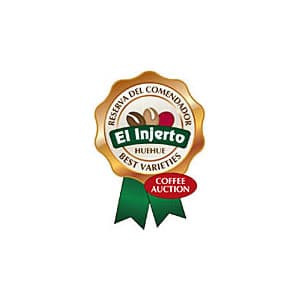
What is the price per pound?
At some auctions, micro-lots can go for over $500 a pound.
Where is it grown?
It’s from the Huehuetenango region of Guatemala. The Aguirre family, owners of Finca El Injerto, are not newcomers to coffee production. The farm got its start in 1905 and has some pretty spectacular conditions.
Why is it so expensive?
More than half the land on the farm is a protected forest. They power their farm with a hydroelectric plant run by natural spring water, so it’s not surprising to learn they got the first C02 neutral certification in Guatemala.
They have won multiple times in the Cup of Excellence competition in Guatemala, which helps make it one of the most expensive coffees.
How is it usually brewed for the best experience?
For best results, brew coffee from Finca El Injerto in a V60.
3. Esmeralda Geisha Coffee Beans
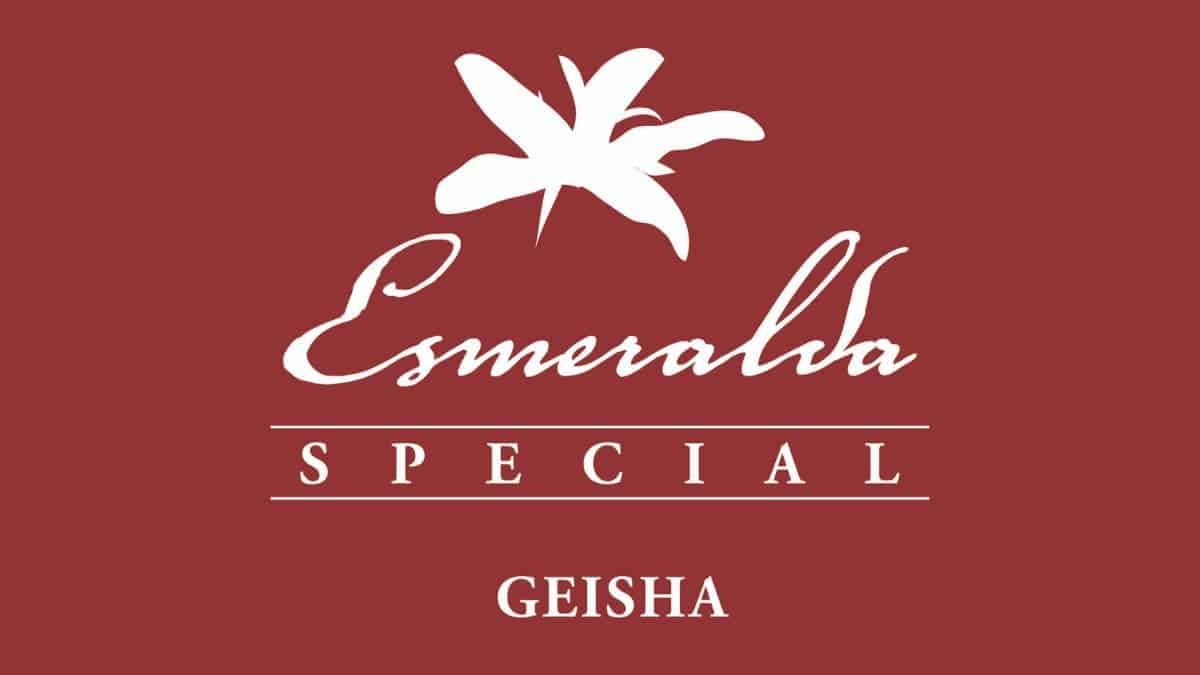
What is the price per pound?
$600 at auctions.
Where is it grown?
Panama, southeastern side of the Barú volcano, on Hacienda La Esmeralda.
Why is it so expensive?
The Esmeralda Geisha took the coffee industry by storm when it competed in – and won – the Best of Panama competition in 2004. It has continued to win awards to this day.
It received the highest price paid for coffee at an auction up to that point, and it became one of the most expensive coffees in the world.
This coffee is produced on just one collective farm, so production is limited. The fantastic flavor is what impresses experts.
Geisha, in general, tastes very different from other coffees, and this Geisha from Finca La Esmeralda is no exception. This coffee is sweet, light, and tea-like, with exceptional clarity, and almost has a sparkling feel. There can be notes of a wide range of fruits.
This coffee became famous not only for its flavor but also because of the Geisha variety. At the time it started winning awards, no one else was growing this coffee variety that is apparently from Ethiopia.
How is it usually brewed for the best experience?
Geisha does well in a Chemex, which brings out the subtle floral and herbal notes and coaxes out a balanced fruity and sweet flavor.
Related read: Geisha Coffee
4. Kopi Luwak Coffee (Civet Coffee)
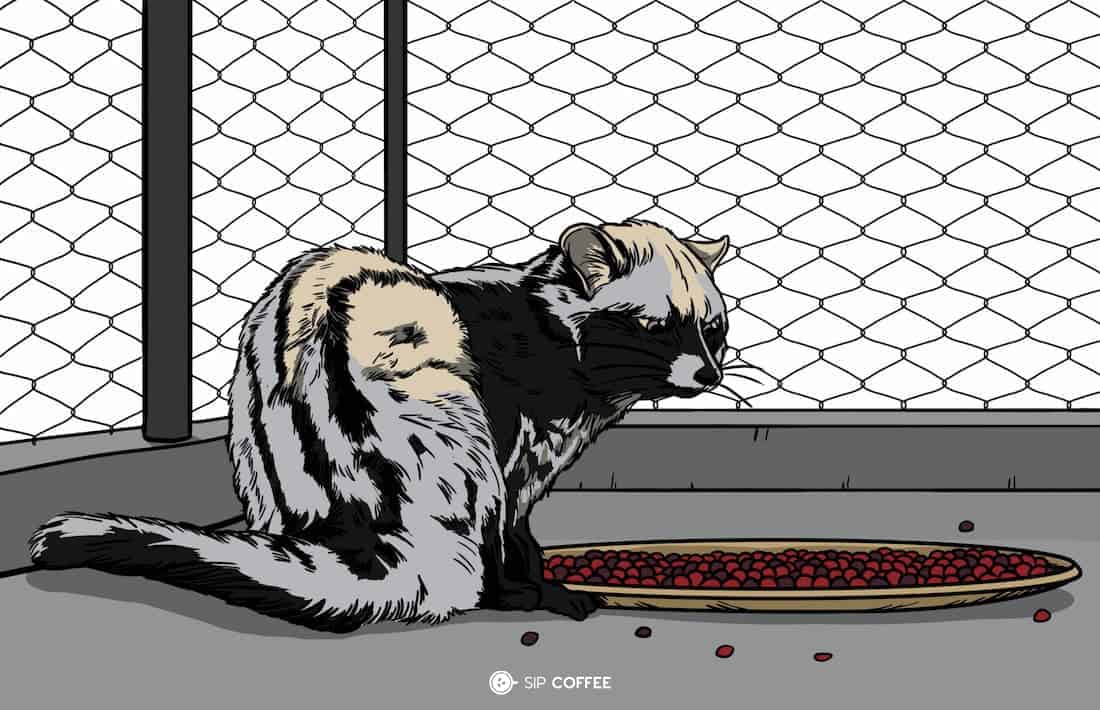
What is the price per pound?
$300 – $600
Where is it grown?
Indonesia, Vietnam both produce Kopi Luwak coffee.
Why is it so expensive?
Originally a by-product of wild civets eating coffee cherries in the wild and undergoing a unique digestion process through the interaction with certain enzymes.
This leads to the animals pooping out partially digested coffee beans which are collected from the civet dung and rinsed off before being processed.
Naturally, genuine Asian palm civet coffee is only available in extremely limited quantities because of this fact.
However, the industrialization of this process had led to the capture of wild Asian palm civets to be force-fed coffee beans is now a global problem. Most of the so-called Kopi Luwak beans are unfortunately thought to be sourced from farms housing thousands of caged civets.
As a result, Kopi Luwak coffee is somewhat of a frowned-upon practice in most coffee circles. Coffee produced from Asian palm civets isn’t something I generally recommend buying – it’s clear that Kopi Luwak has an animal welfare problem, which I’m not keen to support or encourage.
How is it usually brewed for the best experience?
This coffee is frequently brewed in a French Press or pour-over. Fans who enjoy drinking Kopi Luwak comment on its unique flavor profile with a perceived lower acidity.
5. Ospina
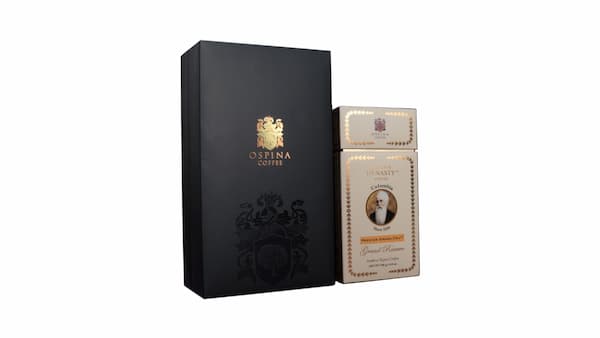
What is the price per pound?
$120
Where is it grown?
Antioquia, Colombia
Why is it so expensive?
The Ospina Coffee farm was established way back in 1835, which makes it one of the oldest operating coffee farms in Colombia.
The Ospina family has learned a few things about producing good coffee in the last two hundred years as plantation owners. Five generations from the same family have grown their coffee on this farm.
Their Grand Cru coffee is grown at over 7,000 feet above sea level in volcanic soil. It has delicate aromas of peach and jasmine and complex flavors ranging from berries to chocolate to nuts, with a velvety body.
How is it usually brewed for the best experience?
This coffee can be brewed in a variety of brewing methods, although it does well in French Press, which accentuates the full body.
6. Jamaican Blue Mountain
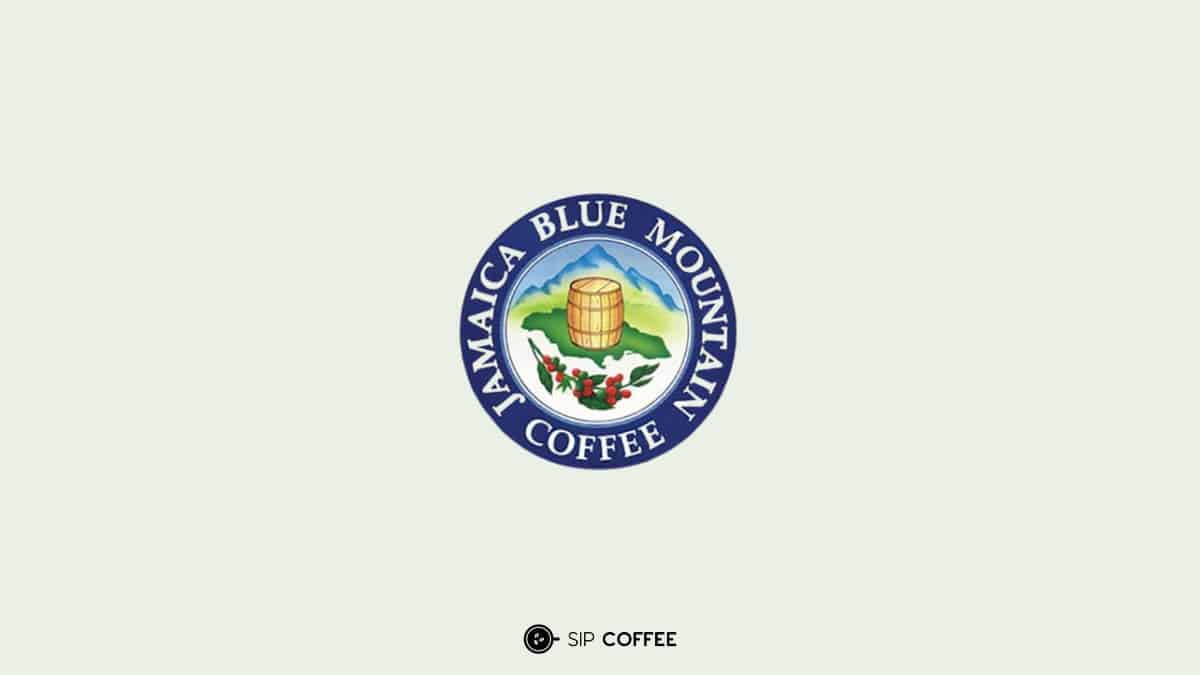
What is the price per pound?
Around $60
Where is it grown?
At 7,500 feet above sea level, the Jamaican Blue Mountains are the highest mountain range in Jamaica and in the Caribbean. They’re called the Blue Mountains because the mist-covered mountains look blue in the distance.
Why is it so expensive?
The volcanic soil and cool weather provide the coffee cherries with plenty of nutrients and enables the fruit to ripen slowly. This imparts complexity to the beans. Then the coffee cherries are handpicked and hand-selected.
The Blue Mountains are a small coffee-growing region. Therefore, output is limited, which makes the prices go high for this expensive coffee.
That also means there are imitations, so make sure it’s the genuine deal before you buy. For a coffee to be a true Blue Mountain coffee bean, the plants must be grown in the Blue Mountains.
Also, be careful with blends, which might have very little Blue Mountain coffee beans in them. Only buy blends if the roaster is very clear about how much Blue Mountain coffee is included.
How is it usually brewed for the best experience?
Appreciated for low bitterness, balanced acidity, and chocolate notes, a French Press will help you get the best results.
Related read: Jamaican Blue Mountain Coffee.
7. Fazenda Santa Ines
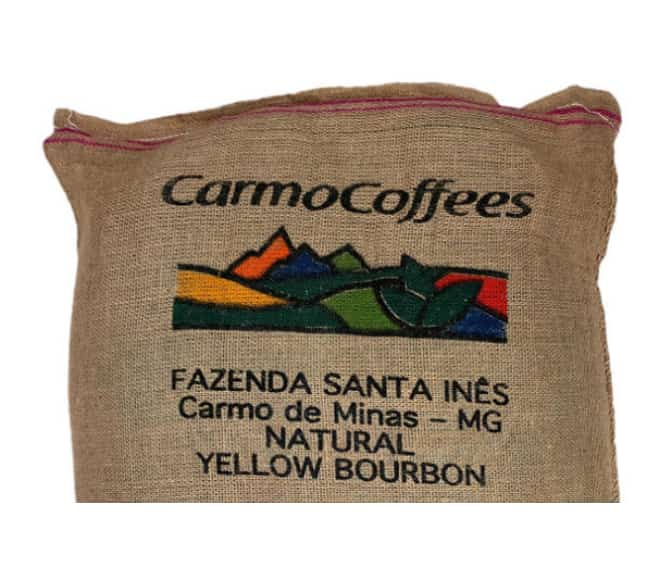
What is the price per pound?
$50
Where is it grown?
From the southern part of Minas Gerais, Brazil.
Why is it so expensive?
This famous Brazilian coffee won the Cup of Excellence in Brazil with a whopping score of 95.85. It’s grown by a family of coffee producers that takes social responsibility seriously. They provide fair wages, medical coverage, education, and other types of assistance for their workers.
The high-altitude farm abounds in natural water springs with rich soil. The coffee is carefully harvested by hand and has bright citrus notes. It’s sweet, layered, and complex with a creamy mouthfeel.
How is it usually brewed for the best experience?
Aeropress will bring out the brightness of this coffee.
8. Los Planes
What is the price per pound?
Around $40
Where is it grown?
Los Planes Coffee is grown in El Salvador at nearly 5,300 feet above sea level.
Why is it so expensive?
Finca Los Planes took the Cup of Excellence by storm in 2006, receiving a rare high score of 93.52 from the international jury. This Pacamara variety of coffee bean is lesser-known but is giving the country fame in the coffee world.
How is it usually brewed for the best experience?
This jam-like coffee has notes of plums and raisins that will do well in many different brewing methods. Consider a V60 to highlight the sweet jam notes or an Aeropress to bring out the lively acidity. Or consider a siphon to bring out the full flavors behind the Pacamara variety.
9. Hawaiian Kona Coffee
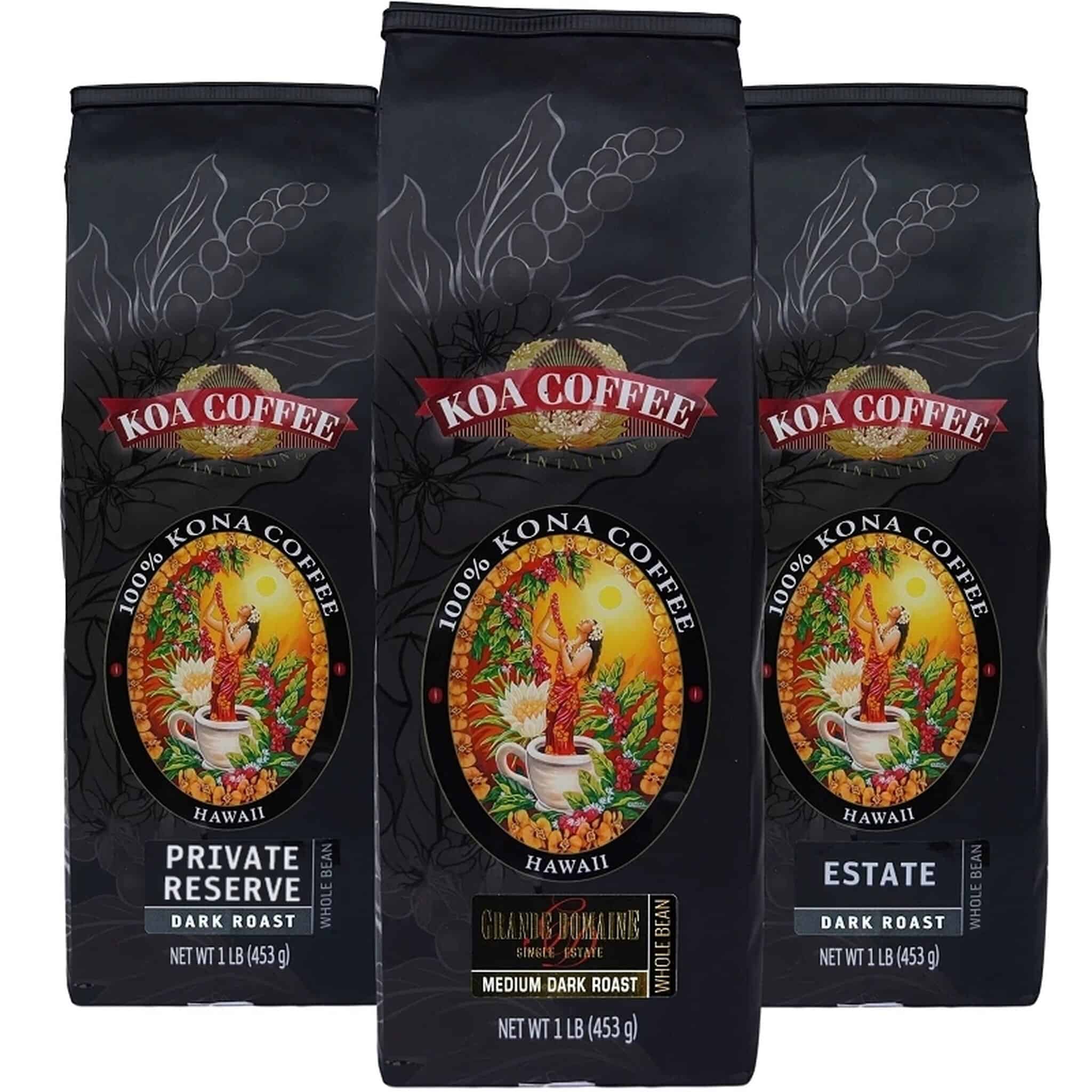
What is the price per pound?
$ 55-60
Where is it grown?
This coffee is grown on the slopes of the Hualalai and Mauna Loa volcanoes on, you guessed it, Hawaii. It’s not a variety of coffee but a region, the Kona Districts.
Why is it so expensive?
When you think of coffee grown in the United States, you probably first think of coffee from Hawaii.
Hawaii has long had the reputation of producing higher quality (often called fancy) coffee. Hawaiian Kona Coffee is appreciated for its unique taste and bold flavors that come from the rich volcanic soil where it’s grown.
This coffee is expensive because labor is costlier on the Hawaiian islands than in many other coffee-producing areas.
Also, the coffee-growing area is small, just a strip of land on the side of those volcanos. Scarcity and short supply make the coffee even more appreciated. It’s also hard to transport off the volcano and the island.
It has been one of the world’s most expensive coffee for a long time. However, beware of blends, which may only have 10% Kona beans in them.
How is it usually brewed for the best experience?
Expect sweetness, such as milk chocolate or brown sugar, from this coffee. Consider a V60 or a French Press to accentuate that sweetness.

